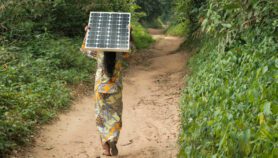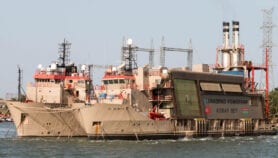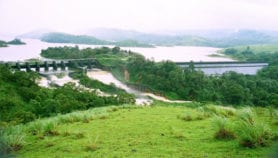Send to a friend
The details you provide on this page will not be used to send unsolicited email, and will not be sold to a 3rd party. See privacy policy.
An artificial leaf that can turn sunshine into electricity was showcased last week at a chemistry meeting.
Its inventors hope they have overcome a key obstacle to making a cheap technology that could provide the poor with energy using just sunshine and water as inputs.
Daniel Nocera, a chemist at the Massachusetts Institute of Technology in the United States, told a meeting that he has built a silicon ‘leaf’ that is about the size and shape of a playing card. It is coated on both sides with catalysts and needs to be immersed in water to work.
When the silicon absorbs the sunlight, it passes the energy to the catalysts which split the water into hydrogen and oxygen molecules. The resulting hydrogen molecules can be collected and either burned directly or converted to electricity via a fuel cell. In either case the byproduct is water, so the leaf has the potential to create a cheap, clean and readily available source of fuel.
"You literally walk outside, hold it up and it works," said Nocera, who presented his unpublished work at the biannual meeting of the American Chemical Society.
"It’s spectacular", Robert Grubbs, a chemist at the California Institute of Technology, told Science.
Nocera, who is also a founder of a spinoff company, Sun Catalytix, said that he hopes to commercialise the technology within 2–3 years.
He is also joining forces with Ratan Tata, chair of Tata Group, an Indian conglomerate, in the hope of producing a refrigerator-sized power plant that can convert sunlight and water into electricity.
References
Science doi: 10.1126/science.332.6025.25 (2011)













